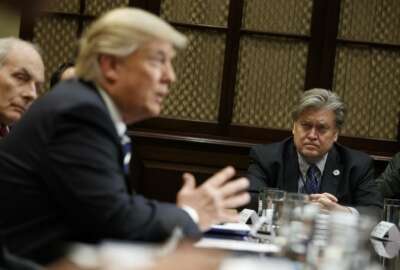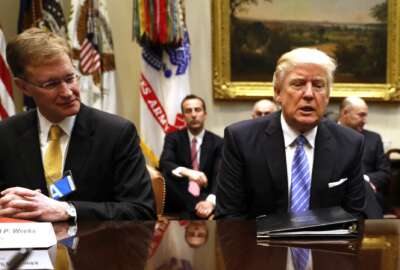
Hiring freeze or just a gentle political breeze?
Is Washington choking inside a great federal hiring freeze or is this just the gentle breeze that usually follows a new presidential team while it attempts to t...
Trump administration officials assigned to whip the federal bureaucracy into shape are finding — like their predecessors — that it is easier said (or ordered) than done (accomplished). Take the hiring freeze. Simple enough, right? Not really.
According to the recipe, the new presidential team ordered a federal hiring freeze for a limited period. The current one is supposed to run about 90 days. Until the Office of Management and Budget comes up with guidelines to reduce the size of the workforce via attrition. Maybe by filling only one of every two vacancies as they occur. Or replacing two out of every three vacancies. The Reagan and Carter administrations tried the same thing.
It should be a piece of cake. A total of 15,317 feds retired in January. The month before, 5,483 pulled the plug. In other months of 2016, the retirement rate ranged from 15,000 a month (January 2016) to a low of 4,753 in December 2015. That’s a lot of vacancies. That doesn’t count people who simply quit, those who don’t make it through their probationary period or people who die. Lots of people.
One thing that freeze overseers always miss is that when times get tough economically (as in a lousy, low-wage job market in the private sector), or when the government starts cutting programs or freezing jobs, people who had planned to leave often decide to stay until things get better. Political “experts” predicted that a Trump election would produce a mass exodus of retirements from the government. In fact, the number of retirements in January 2017 and December 2016 (the first two months after the election) the number of retirements dropped. Not much, but fewer people retired than in the year before. When feds get nervous, like most other breadwinners, they don’t jump off the jobs ship into unknown waters.
The first thing the new team learns about an absolute, solid federal job freeze is there ain’t any such animal. They quickly learn that there are some government functions and jobs that can’t be touched. They are either too vital to the nation’s health, national security, safety or economic stability to simply leave vacant. When people leave them they must be filled as soon as possible. That’s when the exemptions — for Defense, Homeland Security, the VA and other operations are granted. Then there are political and economic issues to consider. Members of the House are pushing for dozens of exemptions. Typical is the bill by Rep. Derek Kilmer (D-Wash.) that would exempt defense shipyards from the freeze, including those in his home state. All politics is local, especially when it comes to good, steady government jobs. And the contractors who work for Uncle Sam.
Imagine if you are a member of Congress from a poor district where the local air base, navy yard, a VA facility or a giant federal prison is the primary employer. Those should be exempt, right? It’s the old not-in-my-backyard rule, only played out nationwide.
And the exemptions keep coming. As per usual.
The trick, as with past hiring freezes, is which agencies will still be doing it when the spring thaw comes.
Nearly Useless Factoid
The phrase “Heavens to Murgatroyd!” was first uttered on screen by Bert Lahr in the 1944 comedy “Meet the People.” Lahr is also the main influence for the voice of the cartoon lion Snagglepuss.
Source: Wikipedia
Copyright © 2024 Federal News Network. All rights reserved. This website is not intended for users located within the European Economic Area.
Mike Causey is senior correspondent for Federal News Network and writes his daily Federal Report column on federal employees’ pay, benefits and retirement.
Follow @mcauseyWFED
Related Stories





